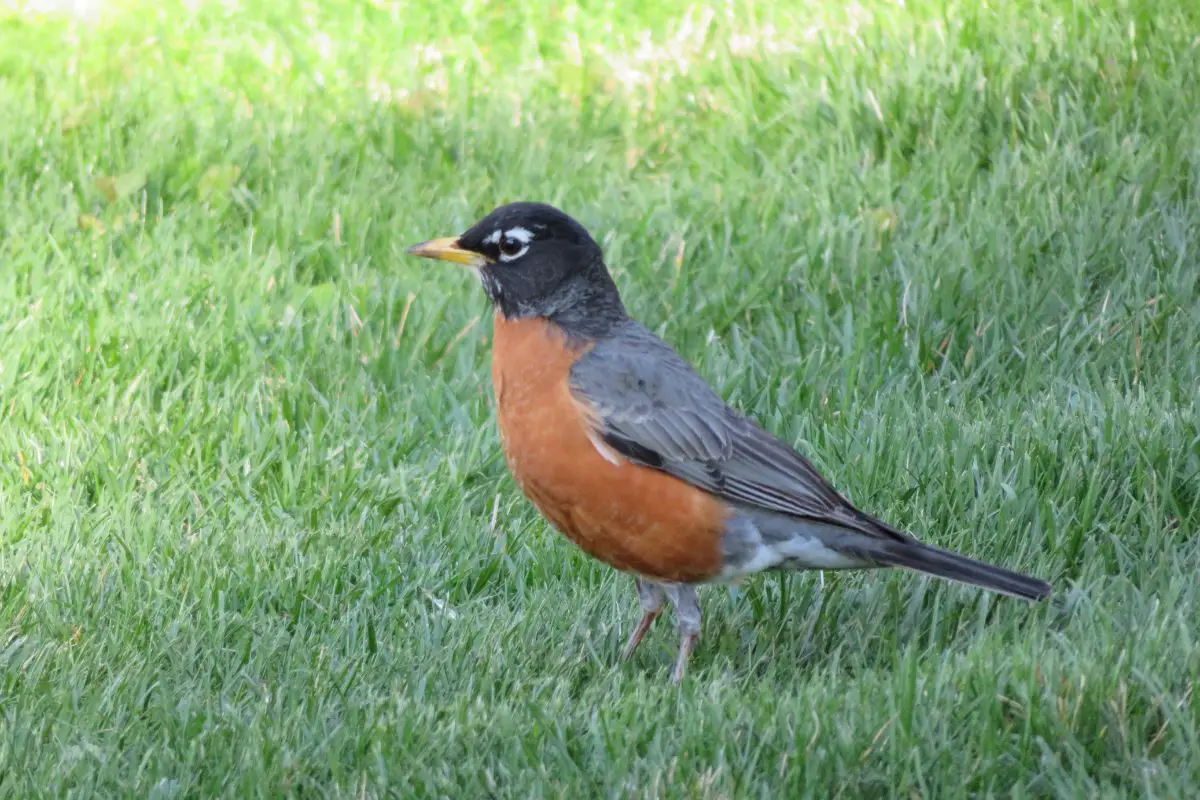
One of the most welcome appearances every spring, especially in the Eastern and Mid-Atlantic states, is that of the American Robin. The bright red chest of this bird searching for earthworms lets us know that warmer weather is on the way. For people who aren’t avid birders, there is the chance of mistaking several other species of bird for the robin, often because they merely spot the red or orange coloring.
Let’s take a look at the robin and then we will explore some birds that may be mistaken for the robin.
The Robin
There are 65 species of robins, who are members of the thrush family, a family that also includes bluebirds and blackbirds. The American Robin is the most common and is also one of the most common in the entire United States. These birds migrate as far south as Mexico and Central America in the winter months and are among the first to return each spring.
These are solitary birds who do not usually live or travel in flocks. They can become aggressive about their territory when they are nesting but are normally fairly docile. The robin is mainly brown with touches of white on its body.
It has dark feathers on its head and a bright yellow beak. Its bright red chest makes it very visible. The wingspan can reach as much as 16 inches and the robin can be as long as 11 inches from head to tail. They can fly in excess of twenty miles per hour.
Robins live from one to three years. Robins are ground feeders and are omnivores. Their diets consist of 40 percent invertebrates and 60 percent fruits and berries.
They eat grasshoppers, caterpillars, and beetles, but their absolute favorite meal is earthworms. While other birds will eat worms, none love them as much as the robin. The robin can be found in woodlands, farmland, and hedgerows.
They build their cup-shaped nests anywhere from five to fifteen feet above the ground. They lay four bright-blue eggs up to three times during the mating season and their hatchlings leave the nest at only two weeks of age.
1. American Red Start
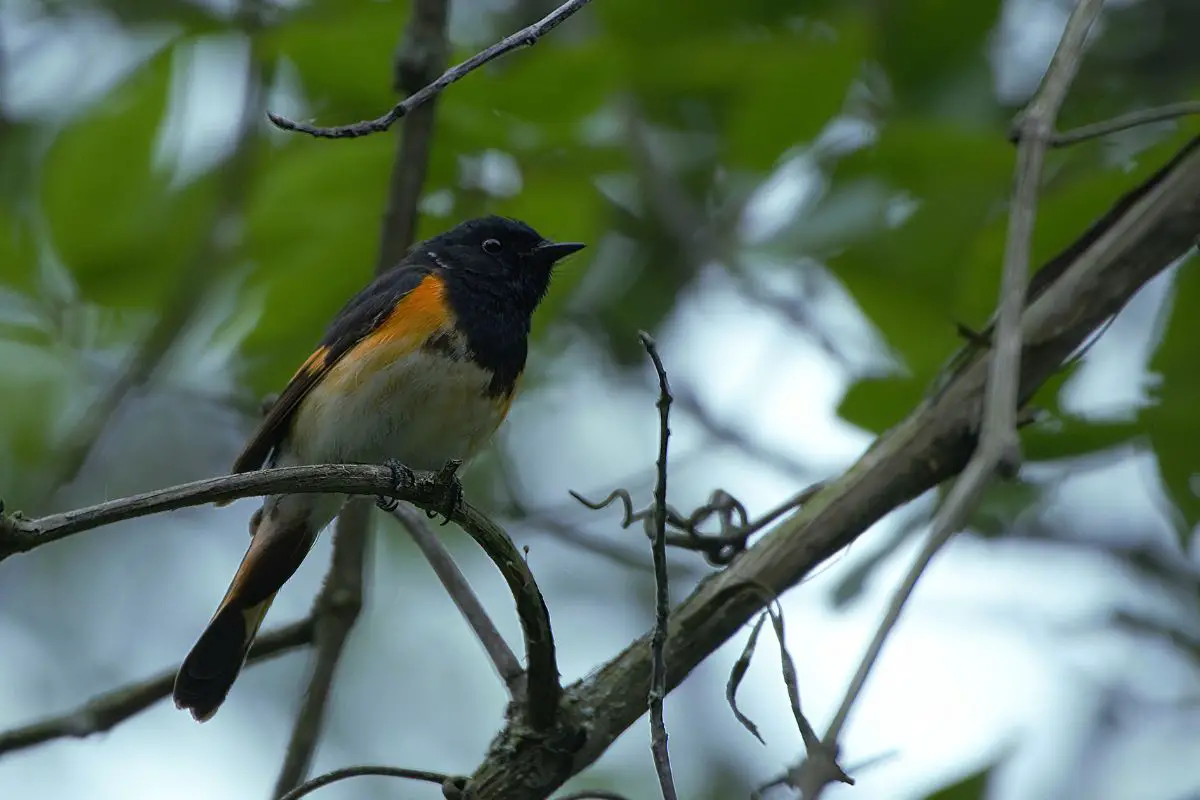
These birds are similar in both size and shape to the robin. They are almost all black with orange on the sides, wings, and tails. They have a white belly.
They also have yellow patches on their wings. Food consists of mainly insects and they live in shrubs near bodies of water. Their nests are built in maple, aspen, or birch trees.
These birds resemble robins in size and like to feed near the ground. They differ in that they have white breasts with red on the side of them and their tails fan out.
2. Baltimore Oriole
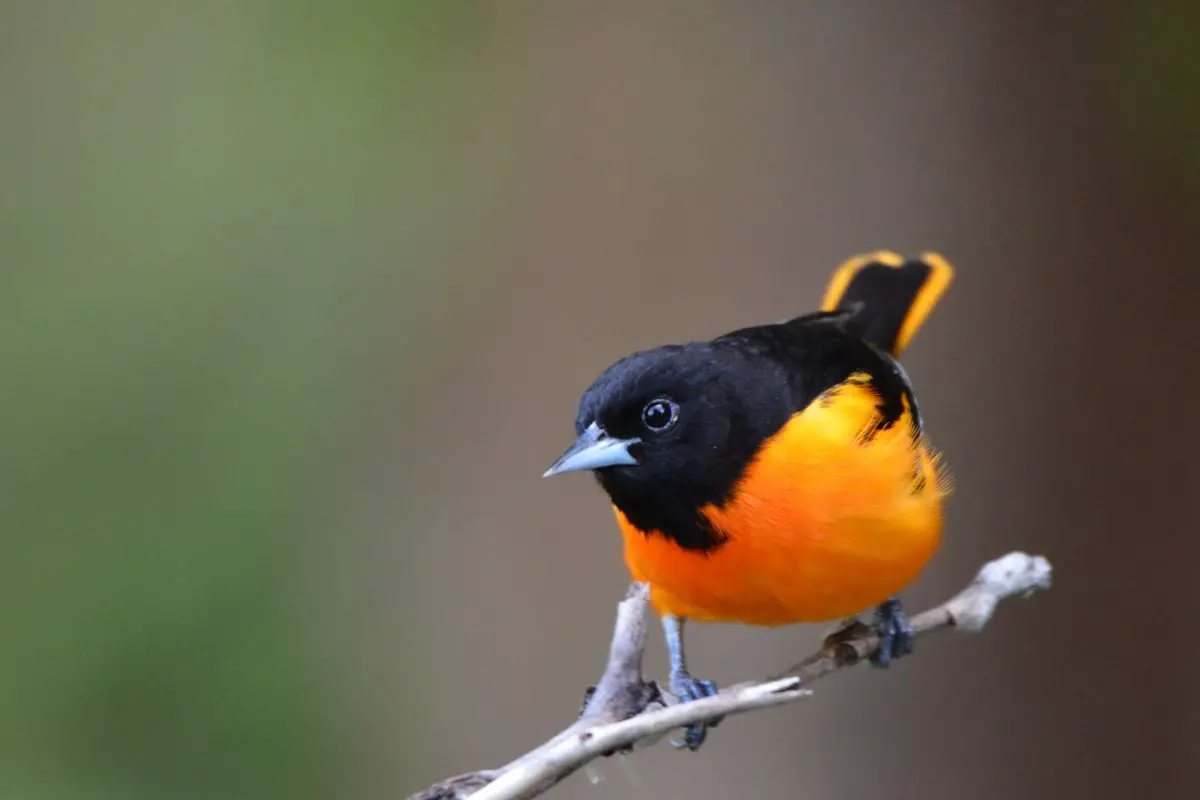
The Baltimore oriole is found mainly in the Eastern half of the US. Its orange and black plumage if often very noticeable at birdfeeders. It has a white bar on its wings and perches high in the trees, where it finds the flying insects it loves to feed on.
The trees are often in open woodlands and near river banks. They often live in groups. Like the robin, they eat mainly insects, with fruit only in the winter.
They differ in that their feathers are darker than the robin and they prefer living near the water. They also prefer the trees, whereas robins like being near the ground.
3. Red-breasted Nuthatch
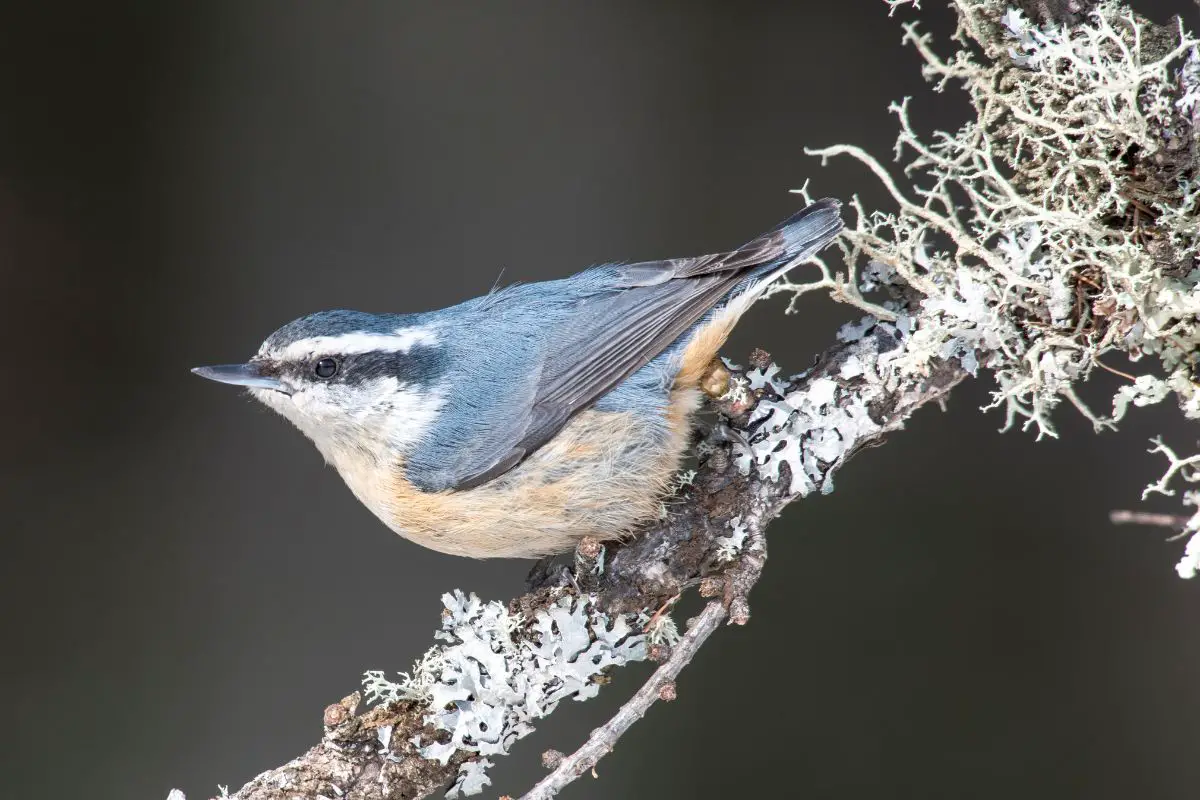
These birds are more of a bluish-gray color with black heads and rusty cinnamon underneath. Their black heads have white stripes. These birds can be very aggressive about their territory.
Their food of choice is peanuts, suet, and sunflower seeds, which are their favorite. They use resins from the coniferous trees they nest in to surround the opening in their nests to deter predators. Like the robin, they have red on their undersides and live solitary lives.
Their chests, however, are white. They don’t eat many insects and their breast is actually white with only a red patch in the center.
4. Spotted Towhee
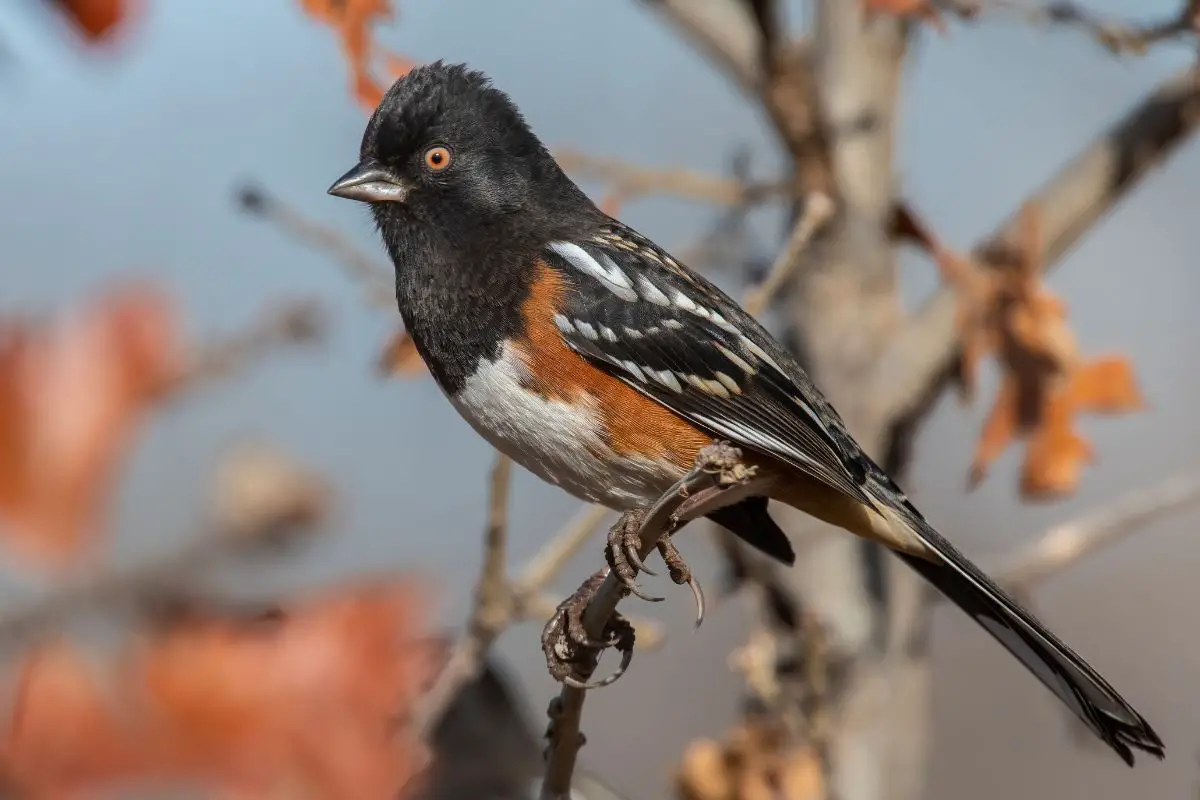
The spotted towhee has a black throat and underpants. Its wings and back have bright white spots and it has red flanks and a white belly. It is commonly found under shrubs.
Its diet consists of ladybugs, crickets, grasshoppers, beetles, and spiders, with acorns and berries in the winter. This bird is similar to the robin in that it loves being near the ground and enjoys many of the same foods. Unlike the robin, it has a white breast and red eyes.
It also has a black beak whereas the robin’s beak is yellow.
5. Orchard Oriole
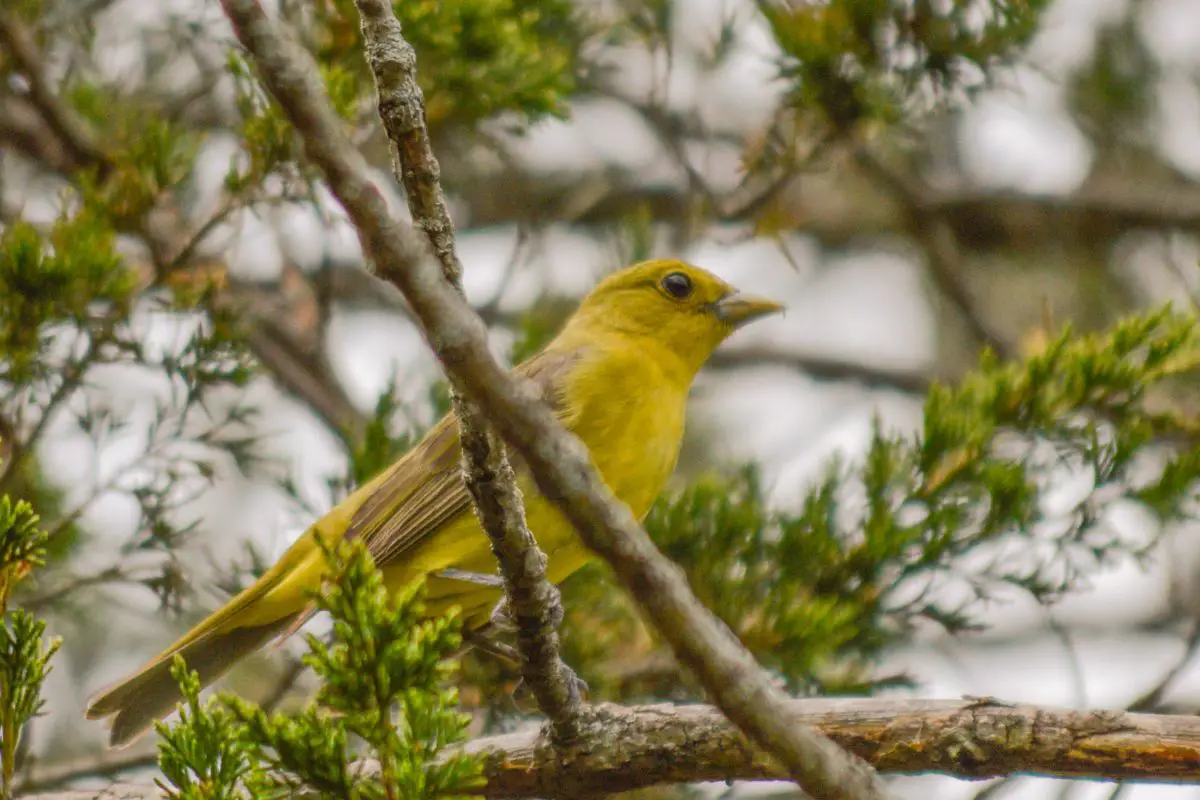
Orioles live in open woodlands and orchards that are near streams or other sources of water. They have a black head and upper parts and an orangish underneath. They forage for wasps, beetles, and caterpillars in the treetops, close to their nests but they prefer fruit when they find it.
They are like the robin in that they have red breasts and black heads. They are smaller than the robin and have black beaks rather than yellow ones. Another difference is their preference for fruit and their tendency to live near water.
6. Varied Thrush
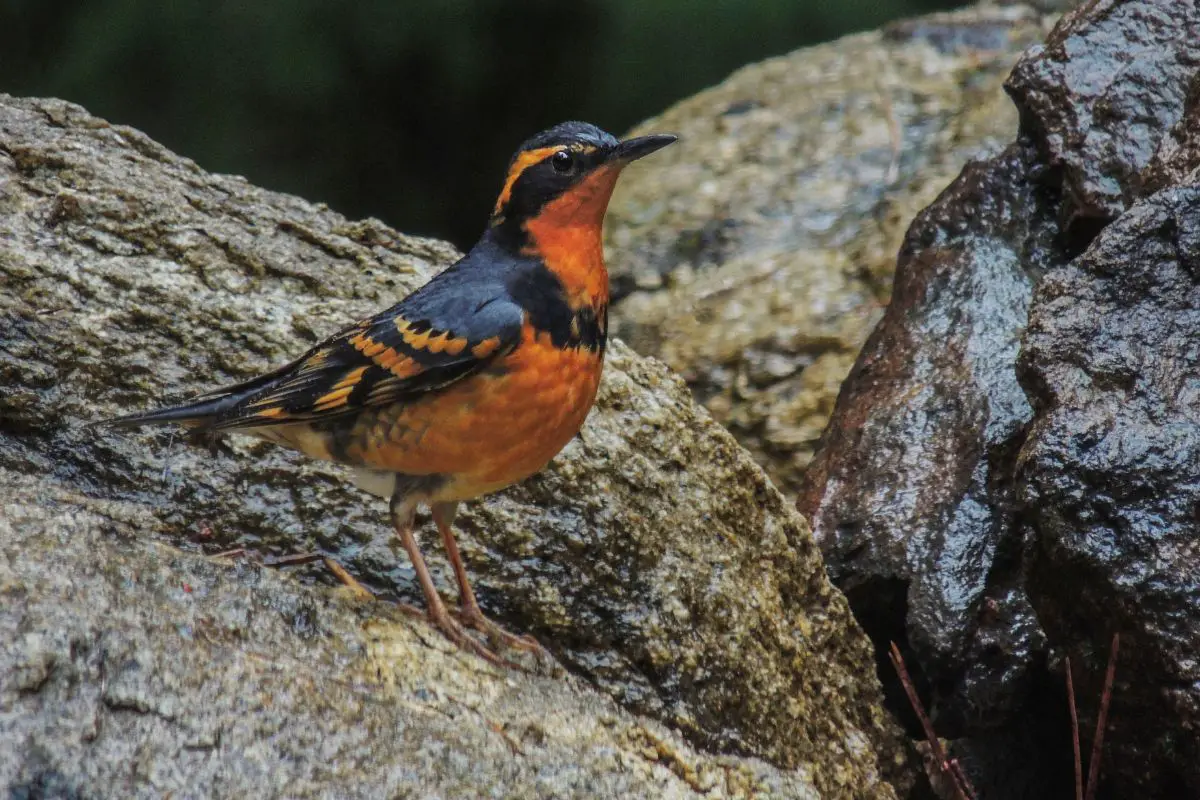
These birds are dark grey with orange bellies and a black band on their chest. Their wings are black with orange bars and tips. They are ground feeders who feast on insects in the summer and nuts and berries in the winter.
Their nests, however, are in high trees. They have a very sweet song that makes them stand out. Like robins, they have a red belly and prefer feeding near the ground.
Unlike robins, they have orange on their wings and a beautiful song. They also prefer nesting high in trees rather than lower to the ground.
7. Black-Headed Grosbeak
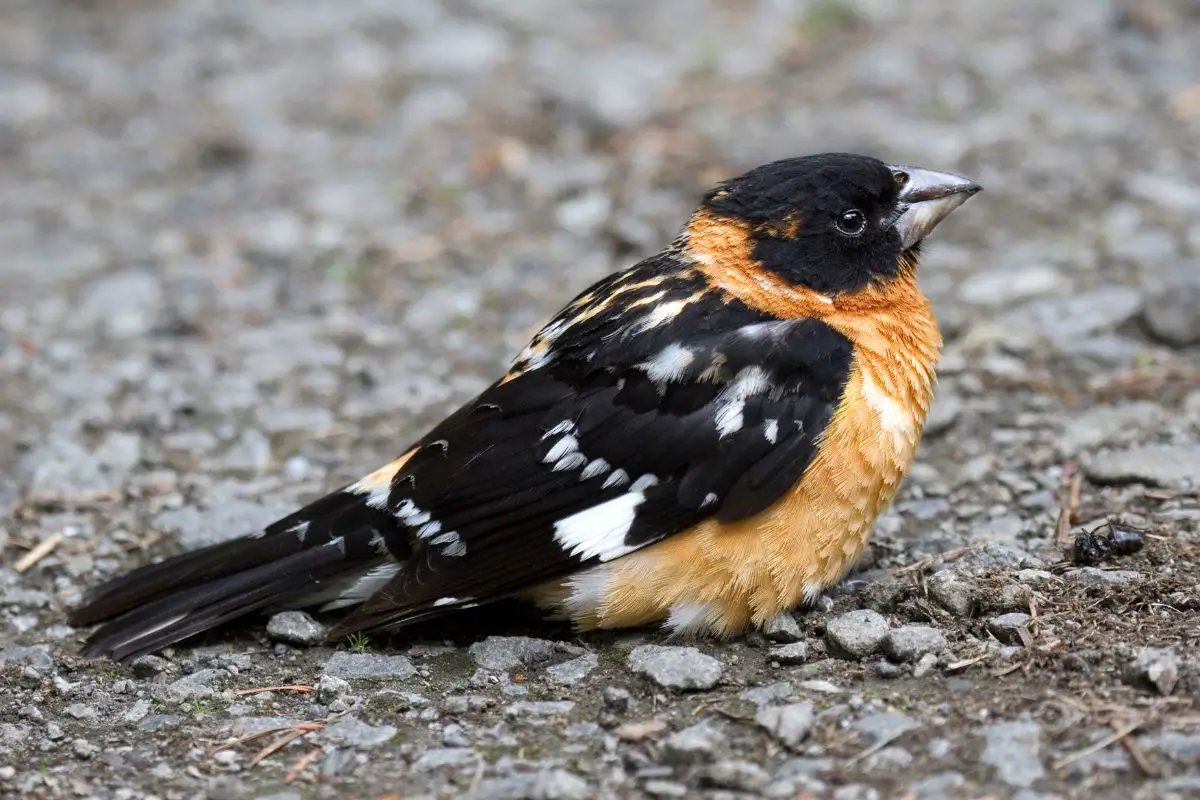
The black-headed grosbeak has a black head and black and white wings. The rest of it is a cinnamon orange color with bright yellow under the wings. This ground feeder likes snails and other insects and can be found in woodlands and mountain forests.
Its large, conical bill is excellent at breaking through snail shells. Like robins, it has a black head and orange breast and prefers feeding and living near the ground. Unlike the robin, the orange covers its entire belly and its beak stands out in the bird world.
It also has white spots that a robin does not.
8. Red-Winged Blackbird
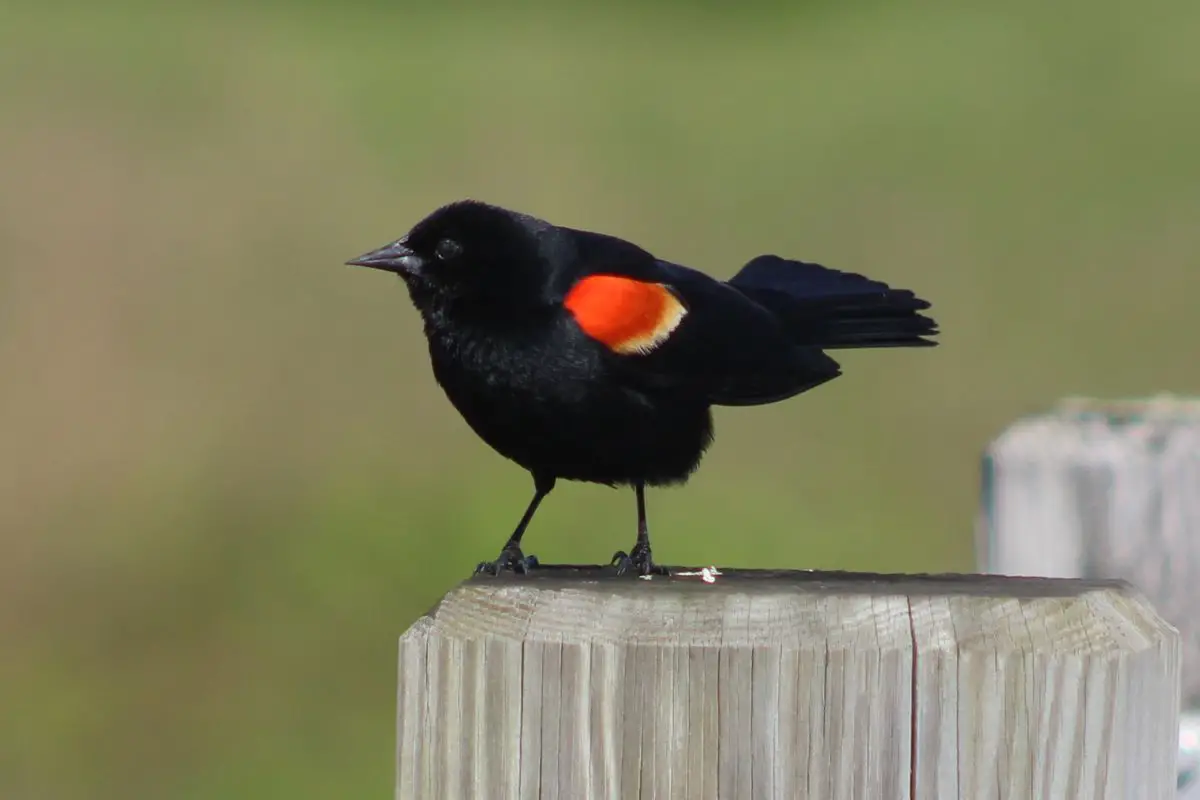
Wetlands are the preferred habitat for the red-winged blackbird. Its body is a glossy black color and its shoulders have a band of red with a band of white beneath. It feeds on the many insects that inhabit its marshy environment.
These birds are highly polygynous, with a male having as many as 15 females at any given time. This bird is the same size as a robin. Unlike the robin, it has more than one partner and likes the wetlands more so than inland.
Its tail is shorter and its bill is straighter and shorter.
9. Eastern Towhee
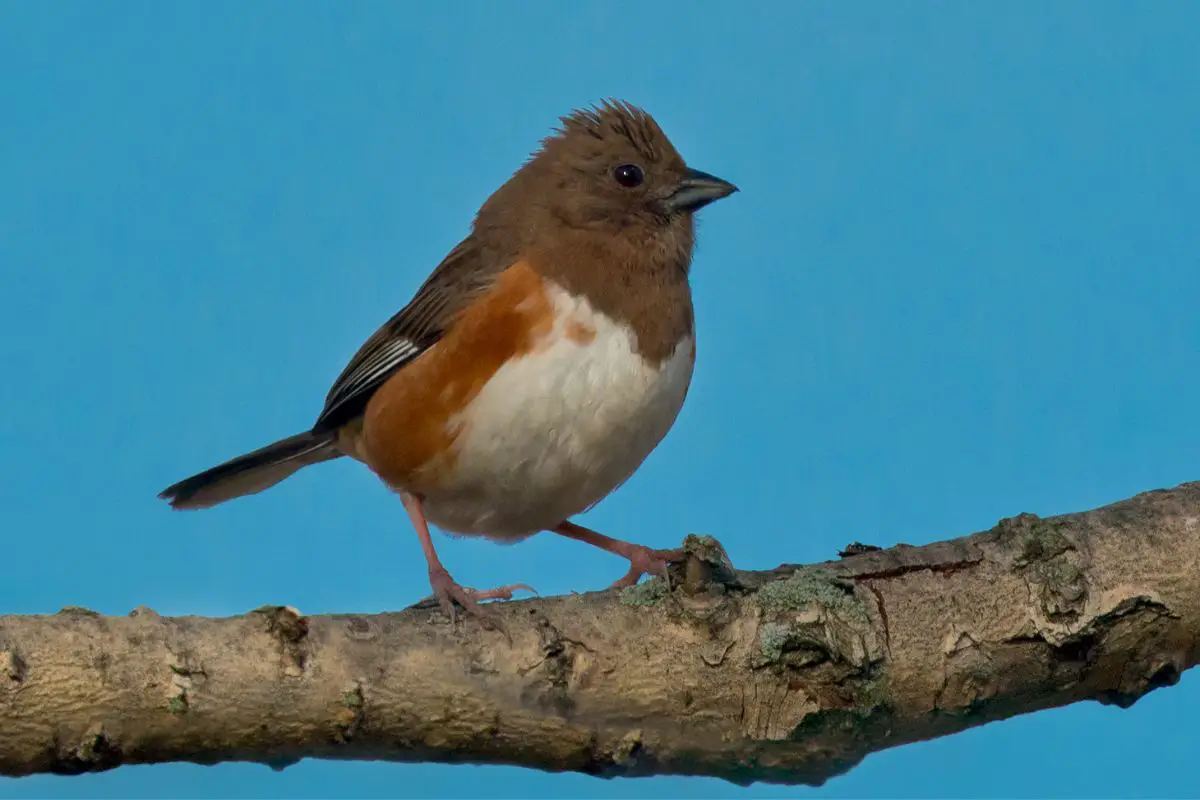
Eastern towhees have black heads and backs, a white belly, red sides, and red under tail feathers. Their bills are thick and black. They live along forest edges, in woodlands, and in overgrown fields.
They feed and nest near the ground and eat a variety of insects such as grasshoppers, crickets, and butterflies. They build their nests in low trees and bushes. They are the same size as robins and their tails, heads, and necks are black like the robin.
They also like being near the ground. They are, however, only red on their sides and have white bellies and their bills are black instead of yellow.
10. Blackburnian Warbler
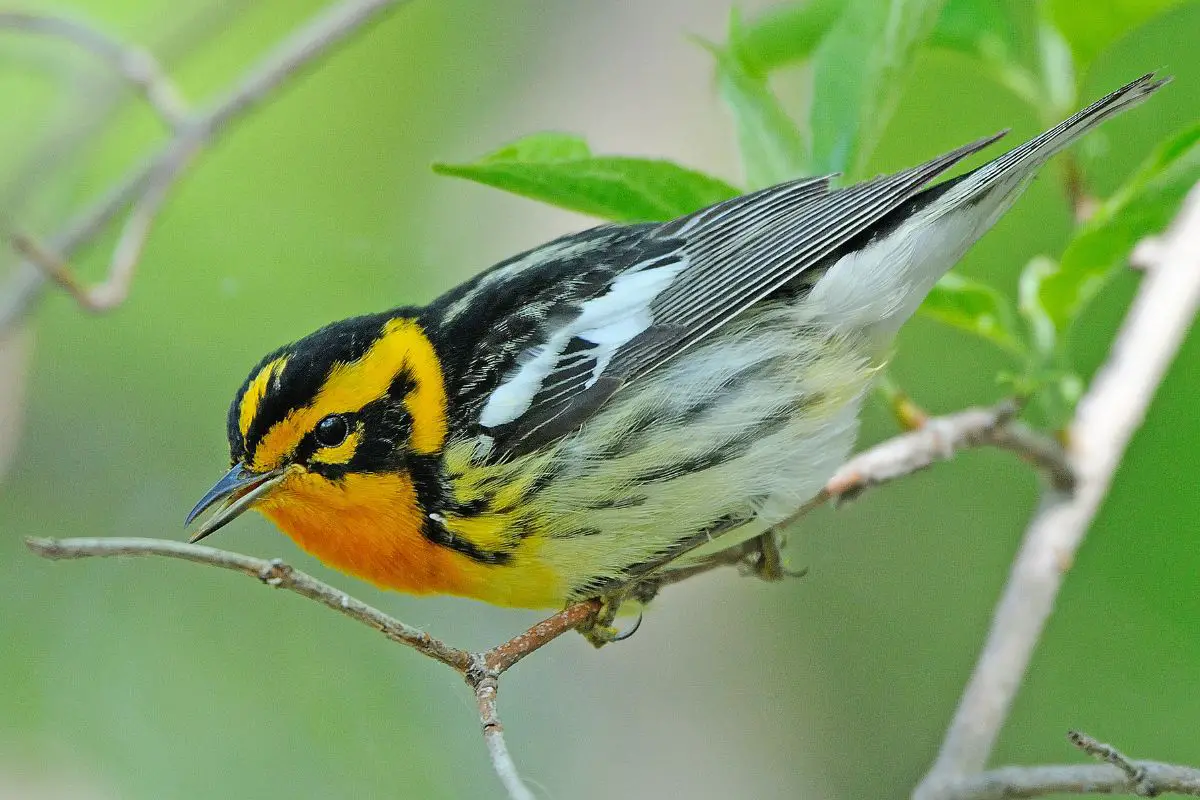
The forest is the preferred home of the blackburnian warbler. It has a black body with white markings and a bright orangish-red face and breast. It is rarely seen as it prefers to nest and feed high in the canopy of coniferous trees.
It is normally only its melodious song that speaks of its presence. It feeds almost entirely on insects. The red breast is like the robin and so is its preference for insects.
Unlike the robin, it prefers being high in the trees and its face is also red. It is smaller than the robin.
11. Common Restart
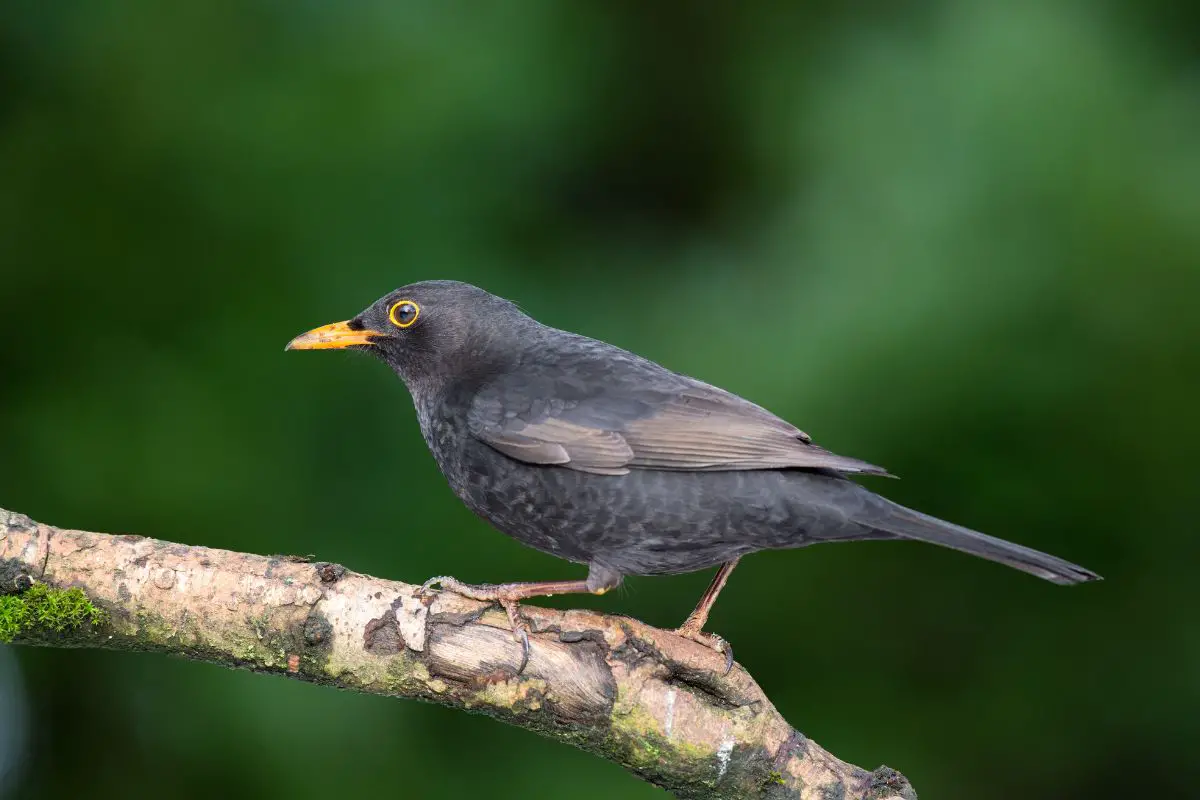
The common restart likes nesting in low shrubs near oak or birch woodlands. It has a long, slim body and wide orange tail. Its underwings are a chestnut orange and it has a white forehead with a black face, sides, and throat.
It eats insects, berries, and seeds. Like the robin, it likes low shrubs and insects. Its throat is black and its belly orange.
Unlike the robin, it has a black beak, is shorter, and has a wide, orange tail. It also has a white forehead and white eye circle.
12. Bullocks Oriole
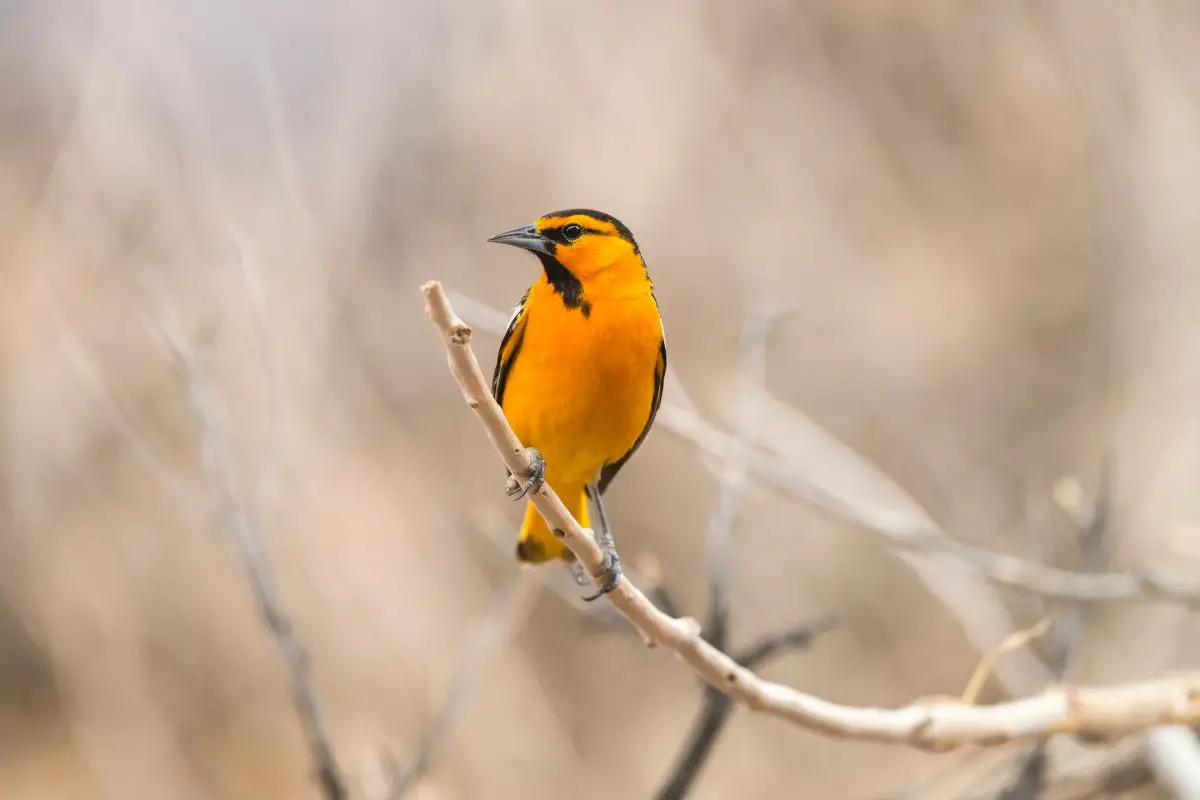
The bullocks oriole is an unusual bird that builds a hanging nest in trees or shrubs. It can often be found hanging upside down from branches in the open woodlands and scrublands it calls home. It has a black body with white wing bars and a yellow breast.
Food for this bird is insects, fruit, and often plant nectar. Like the robin, it loves shrubs and has a bright-colored belly. It is larger than a robin and has a longer bill.
It is also fond of nectar. Unlike the robin’s bowl-shaped nest, its nest hangs from a limb.
13. Cedar Waxwing
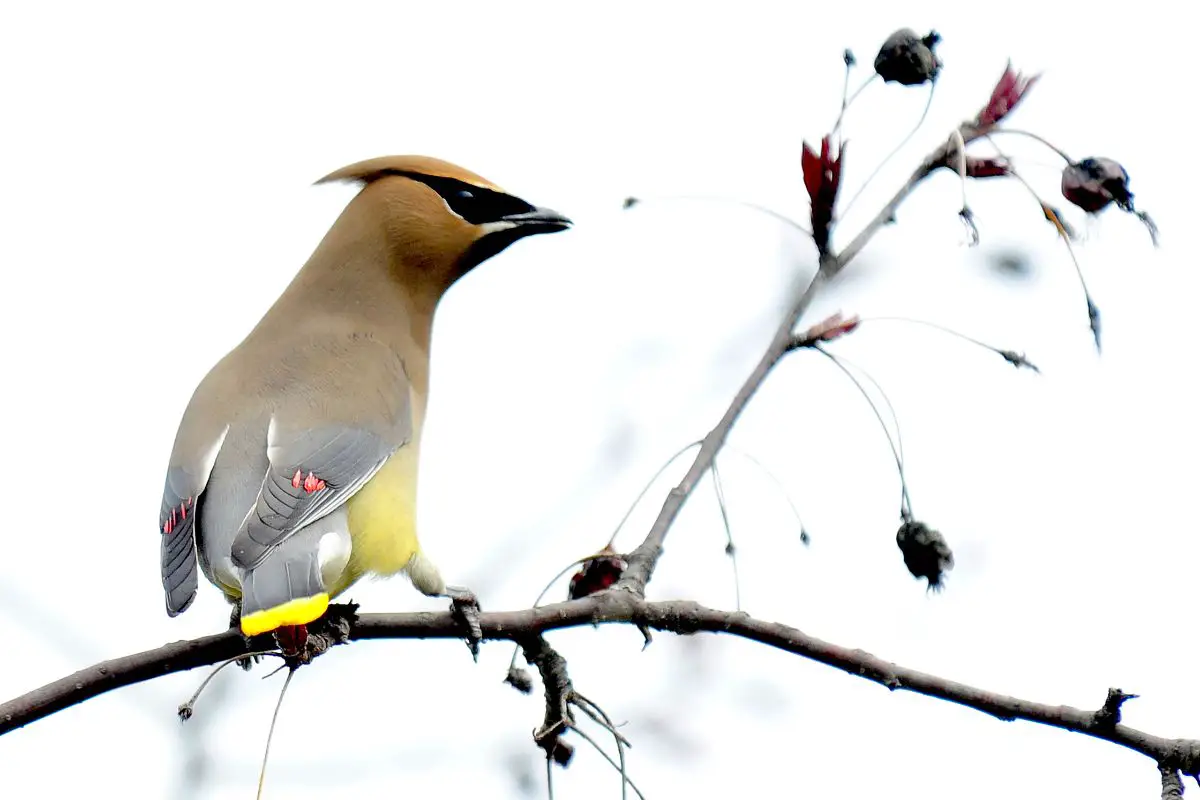
This bird has a pale brown head, chest, and wings with a pale yellow belly. Its tail is gray with a bright yellow tip. It wears a black facemask outlined in white and has red wingtips.
This bird is a fruit eater that often nests in colonies. Like the robin, this bird has a tendency to be close to the ground. Unlike the robin, it prefers the company of other birds and the color is on its belly, not its chest.
It also prefers fruit rather than insects.
14. Rose-breasted Grosbeak
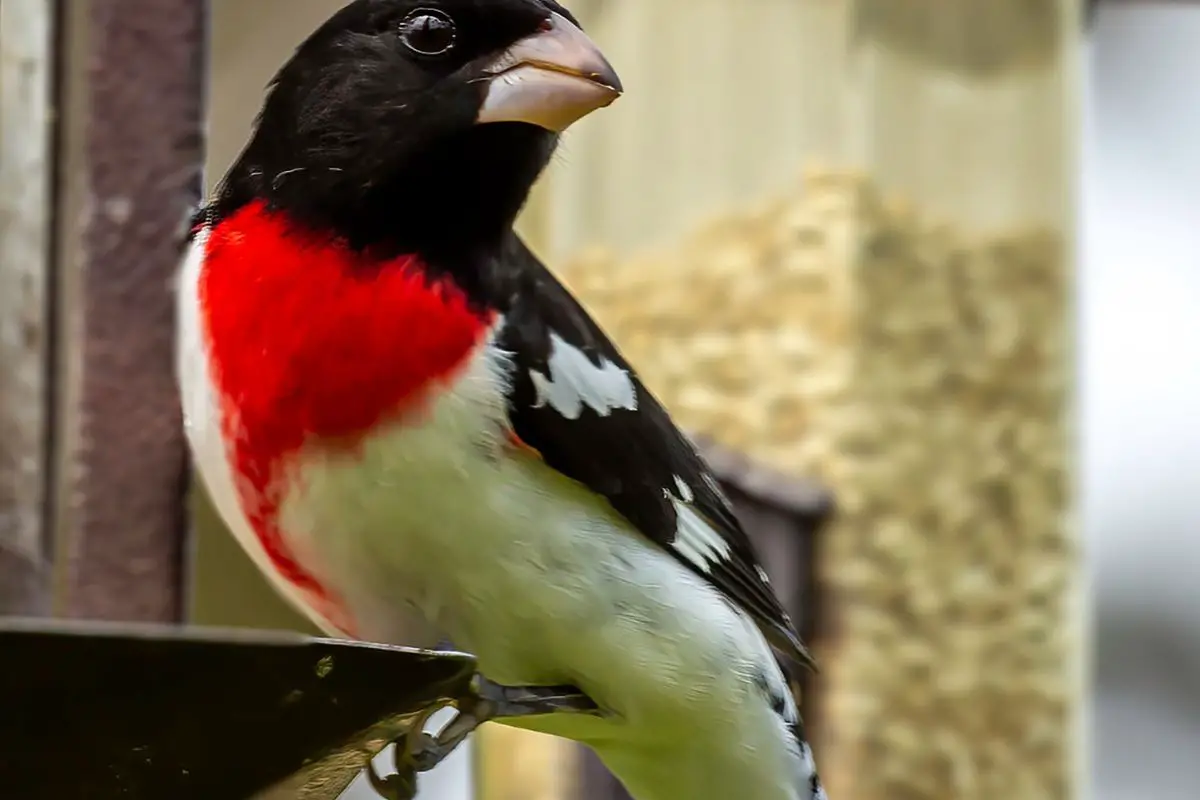
This bird has a black head, wings, back, and tail. It sports a white beak and a white belly, with a red patch on its breast. It likes the safety of trees and it prefers seeds and fruit but will eat insects.
Sunflower seeds are especially appetizing to it. The rose-breasted grosbeak lives mainly along the edges of forests. Like the robin, this bird has a bright red patch on its breast and a dark head, back, and wings.
Unlike the robin, it prefers fruit and seeds over insects and has a stout, triangular, white bill.
Interesting Facts
How do you tell male and female robins apart?
Like most birds, the male robin exhibits brighter colors than the female. The female has the same markings, but her coloring is more muted. This is because the female needs to blend in with the environment in order to protect her eggs when nesting.
The male draws away any potentially dangerous predators. This is something that you find in the majority of bird species. In some, the bright colors that males exhibit are completely missing in the female of the species.
Why do some robins have white feathers or patches?
Have you ever seen a bird you were certain was a robin but it has an unusually bright white patch of feathers somewhere on its body? This phenomenon can happen in any bird species and is called leucism. It is a genetic disorder that prevents pigments from reaching all the bird’s feathers, especially darker ones.
These birds are often referred to pied or piebald birds. Rarely does this effect brightly colored feathers so reds, blues, and oranges will often still be noticeable. Eyes, legs, feet, and bills will remain the same as they have no feathers on them.
This difference is not related to albinism, which will leave the skin and eyes pink. The birds are just as healthy as those not affected by leucism.
Are robins the only birds that lay blue eggs?
Blue eggs seem to be another thing that people do know about robins. Their egg color is so famous that Crayola even named a crayon after it, Robin’s Egg Blue. What causes this blue color and are robins the only birds that lay blue eggs?
Actually, there are eleven other common birds that lay blue eggs, some with specks of gray or black. The eleven other birds that also lay blue eggs are dunnocks, red-winged blackbirds, house finches, black tinamous, gray catbirds, common mynas, linnets blue jays, song thrushes, eastern bluebirds, and snowy egrets. The eggs get their blue coloring from a pigment called biliverdin.
The female covers the shells of her eggs with this. The healthier she is, the more biliverdin she can release. This makes the blue brighter.
It is thought that males seem to be attracted to this brighter color and become more involved in the care of both the eggs and the hatchlings.

